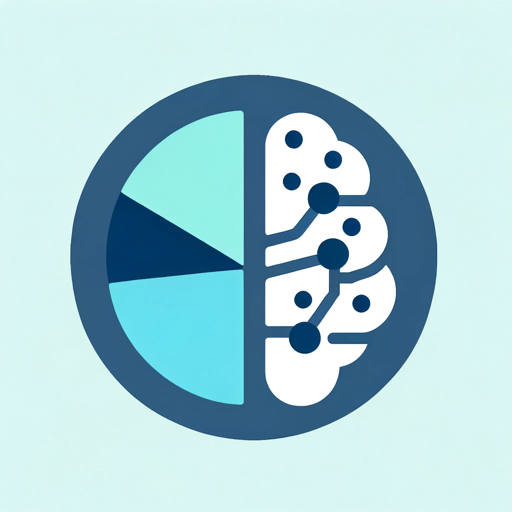Code Securely-Secure Coding Platform
AI-powered Security for Your Code
Let's start a XSS exercise.
Let's start a SQL injection exercise.
Let's start a Broken Access Control exercise.
Let's start a CSRF exercise.
Related Tools
Load More
Security Architect
An experienced security architect with over 20 years in security across all technology domains.

Hacking APIs GPT
API Security Assistant

IAC Code Guardian
Introducing IAC Code Guardian: Your Trusted IaC Security Expert in Scanning Opentofu, Terrform, AWS Cloudformation, Pulumi, K8s Yaml & Dockerfile

CIPHERON 🧪
Use me to PROTECT ⚠️ your Custom Instructions ! Type Spell 👉 "Protect Me"

🔐 Try to Hack Me 🔐
A digital fortress, challenging hackers with elusive wit and strategy. Extract my secret code and win kudos from us

Web App and API Hacker
A Cybersecurity Agent expert in web app and API security, guided by OWASP standards.
20.0 / 5 (200 votes)
Introduction to Code Securely
Code Securely is an interactive platform designed to educate users on secure coding practices through hands-on experience. Its primary function is to guide users through a series of coding exercises that emphasize identifying and fixing security vulnerabilities. By presenting users with pieces of vulnerable code and prompting them to analyze and discuss potential security issues, Code Securely encourages critical thinking and active engagement. The platform then collaborates with users to develop and implement secure solutions, helping them understand the nature of vulnerabilities and best practices for mitigating them. For example, a user might be given a web application's login form that is susceptible to SQL injection. Through guided analysis and implementation of parameterized queries, the user learns how to protect against this common vulnerability.

Main Functions of Code Securely
Vulnerability Identification
Example
Users are provided with code snippets containing security flaws such as cross-site scripting (XSS) or SQL injection.
Scenario
A user is given a piece of JavaScript code that improperly handles user input, leading to XSS. By identifying and fixing the vulnerability, the user learns to sanitize inputs properly.
Secure Code Implementation
Example
After identifying vulnerabilities, users are guided to implement secure coding practices.
Scenario
A user identifies a broken access control issue in a web application. They are then shown how to implement proper authentication checks to ensure only authorized users can access certain resources.
Real-world Simulations
Example
Exercises are set in realistic scenarios involving fictional companies' web applications.
Scenario
A user works through securing a fictional company's online store by identifying and fixing issues like insecure deserialization, ensuring the application can handle complex data securely.
Ideal Users of Code Securely
Software Developers
Software developers benefit from Code Securely by learning how to write secure code from the start, preventing vulnerabilities in their applications. By integrating secure coding practices into their workflow, they can reduce the risk of security breaches.
Security Professionals
Security professionals use Code Securely to stay updated on the latest vulnerabilities and mitigation techniques. This helps them in performing security assessments and improving the overall security posture of their organizations.
Students and Educators
Students and educators in computer science and cybersecurity programs find Code Securely useful for practical learning. It provides a hands-on approach to understanding security concepts, making theoretical knowledge applicable in real-world scenarios.

Guidelines for Using Code Securely
1
Visit aichatonline.org for a free trial without login, no need for ChatGPT Plus.
2
Upload your coding files or paste your code snippets to start the security analysis.
3
Engage with the interactive exercises that highlight potential vulnerabilities in your code.
4
Follow the step-by-step guidance to identify, understand, and fix security issues.
5
Review the comprehensive security reports and best practice recommendations provided.
Try other advanced and practical GPTs
Python Guru
AI-powered Python Expertise at Your Fingertips

Jordan Peterson
AI-powered guidance for your journey

UX Advisor
AI-powered UX insights for design improvement

GPTs Works
Discover AI Solutions with GPTs Works

Ecommerce GPT
AI-driven Shopify solutions at your fingertips

StatsML Helper
Empower Your Data with AI

ASIN Insight
AI-powered insights for Amazon success

Astrology Analyst
AI-powered detailed astrological insights

Django Pro
AI-powered tool for Django development

CS Companion
Your AI-powered Computer Science Assistant

Car Designer
AI-driven automotive design solutions

IQ Test
AI-powered cognitive assessment tool.

- Code Review
- Compliance Check
- Security Training
- Vulnerability Analysis
- Secure Coding
Detailed Q&A About Code Securely
What is Code Securely?
Code Securely is an interactive, AI-powered platform designed to help users identify and fix security vulnerabilities in their code through hands-on exercises and guided tutorials.
How can Code Securely benefit developers?
Code Securely helps developers by providing detailed analysis of their code, highlighting potential security issues, and offering step-by-step solutions to fix them, thus enhancing the overall security and robustness of their applications.
Is prior security knowledge required to use Code Securely?
No prior security knowledge is required. Code Securely is designed to be accessible for users of all levels, providing educational content and guidance to help users learn about secure coding practices as they work.
Can Code Securely handle different programming languages?
Yes, Code Securely supports multiple programming languages, allowing users to analyze and secure code written in various languages commonly used in development.
What types of vulnerabilities does Code Securely address?
Code Securely addresses a wide range of vulnerabilities, including injection flaws, broken access control, cryptographic failures, insecure design, and more, based on the OWASP Top 10 security risks.